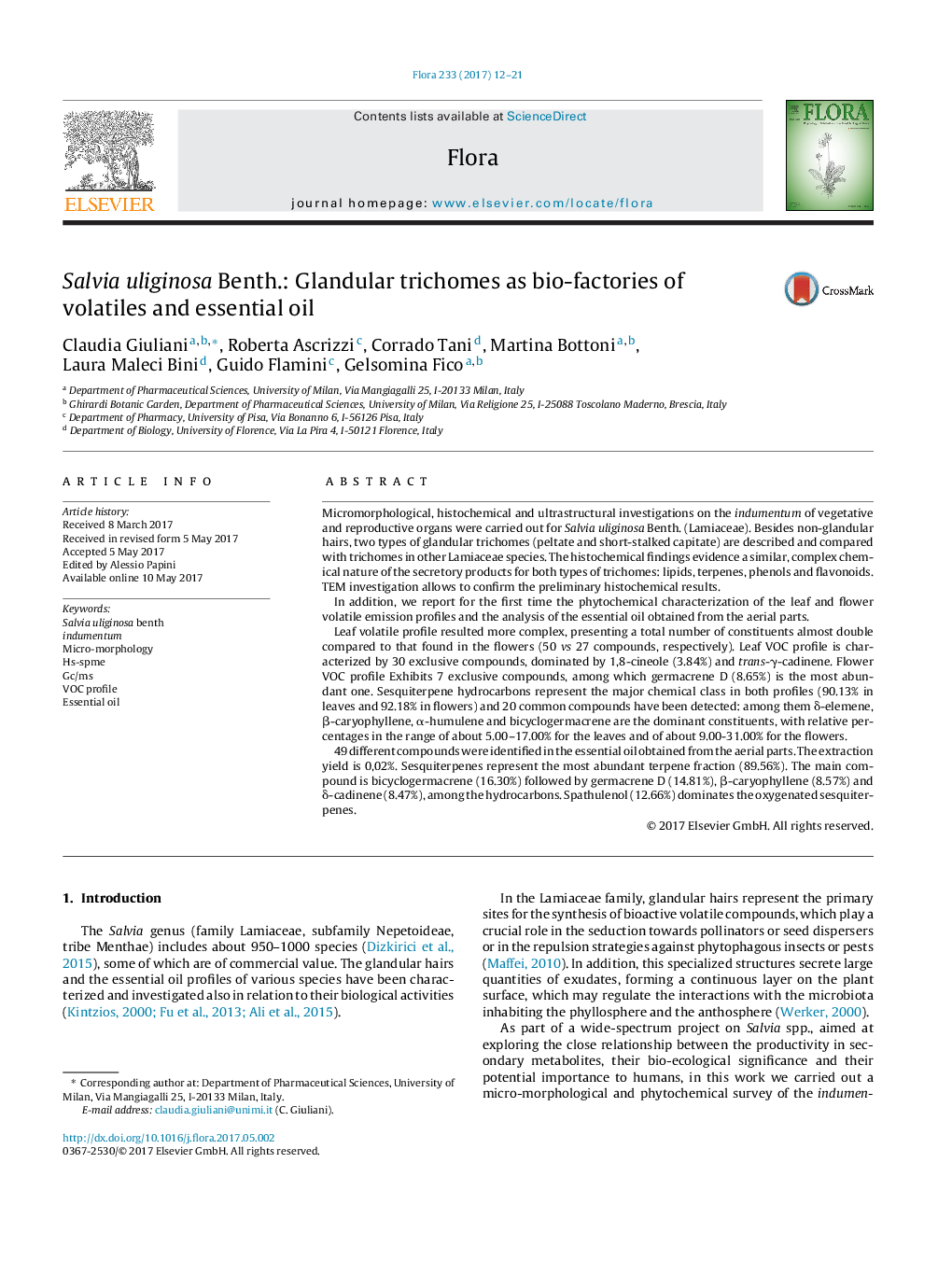| Article ID | Journal | Published Year | Pages | File Type |
|---|---|---|---|---|
| 5532396 | Flora - Morphology, Distribution, Functional Ecology of Plants | 2017 | 10 Pages |
â¢Two trichomes types constitute the glandular indumentum of leaves and flowers.â¢Morphological, histochemical and ultrastructural features of trichomes are investigated.â¢The VOC emission profiles of leaves and flowers are characterized for the first time.â¢The essential oil profile from the aerial parts is also reported.
Micromorphological, histochemical and ultrastructural investigations on the indumentum of vegetative and reproductive organs were carried out for Salvia uliginosa Benth. (Lamiaceae). Besides non-glandular hairs, two types of glandular trichomes (peltate and short-stalked capitate) are described and compared with trichomes in other Lamiaceae species. The histochemical findings evidence a similar, complex chemical nature of the secretory products for both types of trichomes: lipids, terpenes, phenols and flavonoids. TEM investigation allows to confirm the preliminary histochemical results.In addition, we report for the first time the phytochemical characterization of the leaf and flower volatile emission profiles and the analysis of the essential oil obtained from the aerial parts.Leaf volatile profile resulted more complex, presenting a total number of constituents almost double compared to that found in the flowers (50 vs 27 compounds, respectively). Leaf VOC profile is characterized by 30 exclusive compounds, dominated by 1,8-cineole (3.84%) and trans-γ-cadinene. Flower VOC profile Exhibits 7 exclusive compounds, among which germacrene D (8.65%) is the most abundant one. Sesquiterpene hydrocarbons represent the major chemical class in both profiles (90.13% in leaves and 92.18% in flowers) and 20 common compounds have been detected: among them δ-elemene, β-caryophyllene, α-humulene and bicyclogermacrene are the dominant constituents, with relative percentages in the range of about 5.00-17.00% for the leaves and of about 9.00-31.00% for the flowers.49 different compounds were identified in the essential oil obtained from the aerial parts. The extraction yield is 0,02%. Sesquiterpenes represent the most abundant terpene fraction (89.56%). The main compound is bicyclogermacrene (16.30%) followed by germacrene D (14.81%), β-caryophyllene (8.57%) and δ-cadinene (8.47%), among the hydrocarbons. Spathulenol (12.66%) dominates the oxygenated sesquiterpenes.
Graphical abstractDownload high-res image (186KB)Download full-size image
